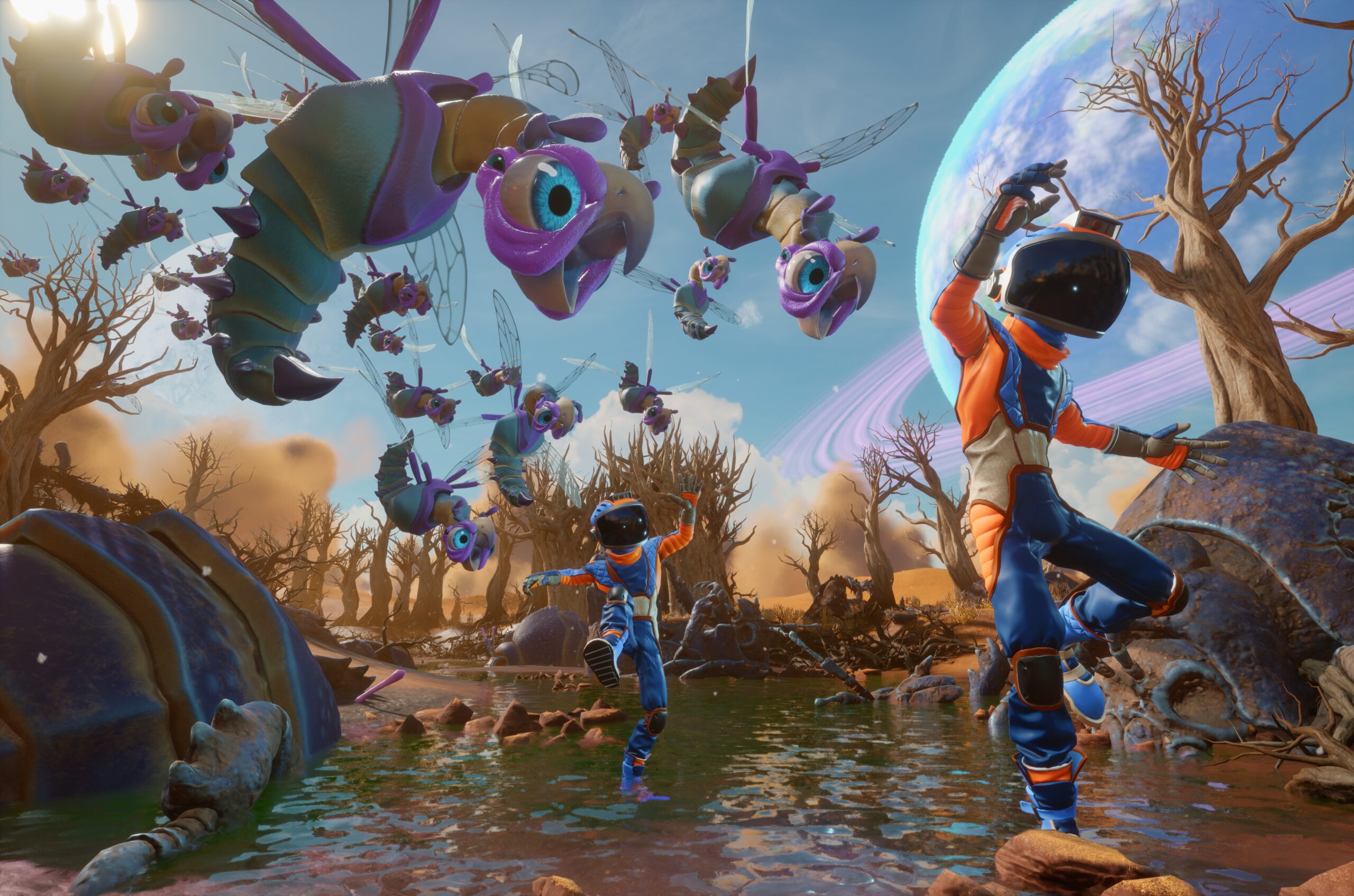“We’re back from the dead, rising like a phoenix,” says Alex Hutchinson, creative director of Revenge of the Savage Planet. Five years ago, the first—and unexpectedly last—game of Hutchinson’s former studio, Typhoon, Journey to the Savage Planet, was a bit of a cult hit. It was a fun first-person bop across an alien world, with jokes about capitalism in a far future ruined by “corporate greed and stupidity.” Then Google bought the studio and shut down its gaming business on the same day Journey launched on the Stadia streaming platform.
That almost comical turn of events ended up fueling Hutchinson’s newly established studio, Raccoon Logic, to give sequel Revenge of the Savage Planet a stronger satirical bite.
“We bought the IP back from Google and [former publisher] 505 Games, and we’re excited. It was all a bit tiring, overall. I think at the end of the day, everyone wants to make games, but of course, you collide against the realities of the business,” said Hustichson about the experience with Google Stadia. “You’ve seen that a lot in the games industry over the last few years, but you have to take [the process of making games] seriously and earnestly and understand that it’s not magic. With this game, we’ve stayed tiny as a studio; we’re still only 30 people, which gives us a sense of stability, and that’s really nice.”
The hurdles of re-acquiring the rights to their own game, and the tumultuous last few years within the games industry, added fuel to the concept of the sequel, which tries to be an optimistic but “funny dystopia.”
Much like the original, Revenge of the Savage Planet sees players take on the role of an unnamed space explorer and low-ranking employee tasked with traveling to distant planets and claiming them for the corporation Kindred Technologies. Since Journey, Kindred was acquired by another corporation, and is now a subsidiary. Kindred is still a powerful force in space travel, but the company remains deeply incompetent in ensuring safety for its employees and the planets it casts its sights on.





With Revenge of the Savage Planet, the protagonist—and other allies played by other players in co-op mode—will be able to explore a cluster of worlds housing rich resources, unusual wildlife and plants, and other remnants of lost civilizations. But the foundations of the game’s tone and pacing are still tied to its comedy, which pokes fun at the unusual development history of the sequel.
For one thing: it’s third-person now. Revenge lampoons the transition with an opening cutscene that starts in first-person but sees the protagonist jolted by electricity so hard the camera springs into a third-person behind them. While the original felt like a mix between Oddworld: Stranger’s Wrath and Metroid Prime, Revenge of the Savage Planet goes for a more fast-paced 3D action-platformer like Ratchet and Clank and, to a lighter degree, Breath of the Wild.
Compared to the original, Revenge of the Savage Planet has a greater degree of freedom in traversal and puzzle solving, which largely retains the elements of the original’s Metroidvania-style design. It’s more engaging to interact with the alien environments now, but the added effect of changing to third-person makes the comedy more expressive. Revenge feels more cartoonish, with exaggerated animations and action giving some strong Looney Tunes vibes. It fits the oddball nature of the game.
The yucks aren’t just for color: Revenge’s comedy can dovetail nicely with some of the new systemic design that reminded me of Breath of the Wild. During one section I was being chased by small yet very aggressive rodents. Switching over to a fire weapon, I blasted some of the critters away, but stray shots hit some nearby grass, which spread and lit up the other approaching enemies. “Fire burns grass” isn’t exactly groundbreaking, but it was fun to see this play out, and being able to come up with some wacky solutions to challenges adds a lot of charm.
The sequel also adds deeper player customization to suit its increased scope and third-person camera. Along with new outfits player housing is also a thing, and much like Fallout 4, the game allows for some pretty robust ways to build out your safe haven with materials found on the planet or rewarded by Kindred Technologies.
According to Hutchison, the game’s approach to giving players a range of tools and assets from Kindred all points back to the satire of late-stage capitalism in the far future.



“Someone smarter than me said that science fiction isn’t about the future; it’s about the present. Like, we’re doing this interview about a video game in a parking lot next to a Mexican restaurant that’s in front of an abandoned high-rise building in downtown Los Angeles. We just took all those ideas [from our present day] and exaggerated them into the future, several hundred years. But the idea is that it’s an optimistic yet funny dystopia.
“I think it’s very hard to be serious in a game, like when people are running around and they’re just listening to someone in the game give this terrible backstory about the death of their family, and then you’re just lobbing grenades over their head or something right after. It’s far easier and more natural to lean into the comedy aspect of games and say it’s a bit ridiculous.”
So far, Revenge of the Savage Planets nails what made the original so novel, but its departure from the structure and perspective gives it its own identity. Some of the jokes really landed for me, too, like Kindred’s 3D printer that acts as a respawner for players. The game maintains that sense of self-deprecating humor and high-tech, low-lives mentality for a vision of the future that feels plenty relevant right here and now.










